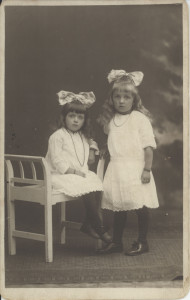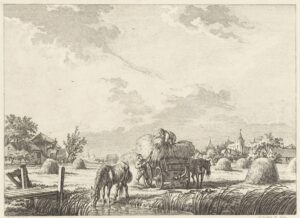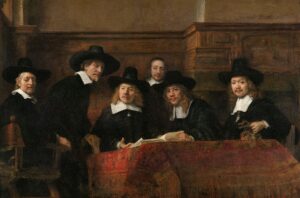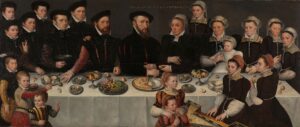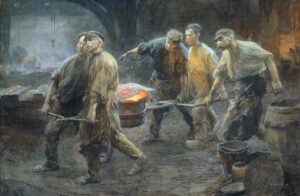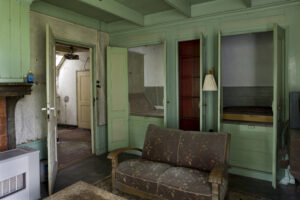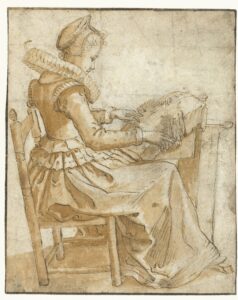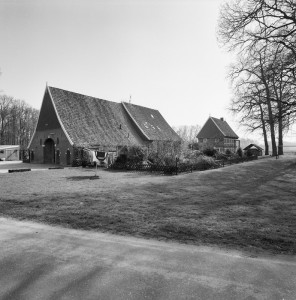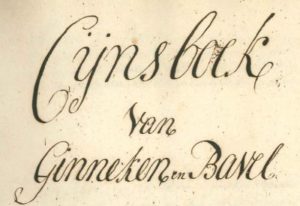A voorkind, literally a before-child, is a child born before the marriage. In the 1900s, this term was commonly used for a child born out of wedlock, before the mother was married. In the 1600s and 1700s, it could be used to describe the children of a previous marriage. For example, in a will, you may find a parent describing what to leave to the voorkinderen (children from a prior marriage) and what to leave to the nakinderen (after-children), of the current marriage. … [Read more...]
Dutch term – Zomer
Zomer means summer.Traditionally, summer was the time for harvesting. Even outside the summer holidays, school attendance was lower in the summer in rural areas, because children were kept home to help bring the harvest in. Summer is a nice period to visit the Netherlands, although popular tourist destinations can be overcrowded. Opening hours of museums and tourist attractions are great during the summer, but beware that opening hours of archives may be reduced. … [Read more...]
Dutch term – Beroep
The beroep is the occupation of your ancestors. Knowing the beroep not only gives you some insights into your ancestors lives, but can help you in your research since different occupations created different types of records. See the article How to Find your Dutch Ancestor's Occupation for more information. … [Read more...]
Dutch term – Nakomeling
A nakomeling (literally: one who comes after) is a descendant. It's a term you may encounter in wills or endowments, for example when certain branches of the family get an inheritance or rights to a recurring payment or other provision. … [Read more...]
Dutch term – IJzergieterij
An ijzergieterij is an iron foundry. Especially during the industrial revolution in the 1800s, iron and steel became an important building material and ingredient for many items. The first foundry started in 1689, to supply arms to the army. By the late 1800s, dozens of foundries operated throughout the Netherlands. They were essential to the development of the railway network in the country. … [Read more...]
Dutch term – Bedstee
A bedstee was a bedstead. Typically, it was a closet in the kitchen or living room where people slept. At night, the doors would be closed to contain the body heat. The bedstead would be short, typically less than 1.50 m/5 feet, since people slept upright. Some bedsteads had a shelf for a crib, or a drawer underneath the bed where infants would be put to sleep. You may encounter bedsteads in estate inventories. Estate inventories are typically organized by room, which will show you whether … [Read more...]
Dutch term – Kantklossen
Kantklossen is the art of making bobbin lace. It is made by twisting threads using bobbins. Pins hold the lace in place while it is being made. Bobbin lace took a lot of time to create and was expensive. Having clothes with bobbin lace was a sign of wealth and can be seen in many paintings and inventories of richer people. … [Read more...]
Dutch term – Kwartierherhaling
Kwartierherhaling, literally "repetition of quarters," means pedigree collapse: the situation where the same people appear in multiple places in your pedigree chart. That means you descend from the same person or couple in different ways. If your ancestors are from small towns in the Netherlands, sooner or later you'll run into kwartierherhaling. In general, the more recently your ancestor lived in a small village, the higher the collapse. On my father's side, who was from the village of … [Read more...]
Dutch term – Schout
In many parts of the Netherlands, the schout used to be the term for mayor or sheriff. The schout represented the overlord and oversaw the administration and court in a district. His role combined those of a modern mayor, judge, and police commissioner. … [Read more...]
Source – Rent Registers
"Cijnzen" or rents are rights to annual proceeds. The rights could be attached to land or property, certain official functions, or rights in common grounds. In the Middle Ages up until say the 1700s, rents were often paid in kind, for example in grain. Dominion rents Rents could be attached to a domain, the area belonging to an overlord. For example, the overlord could give land to a family in exchange for an annual payment. These rents were perpetual. Rents could also be required to pay in … [Read more...]
